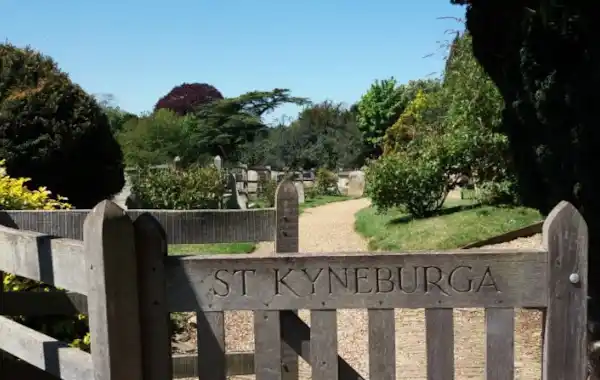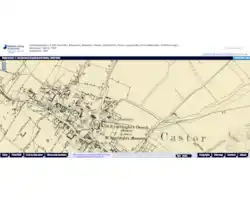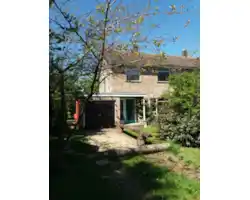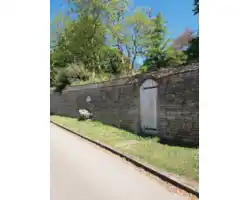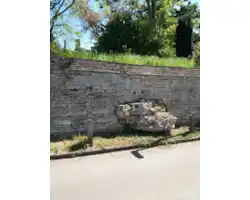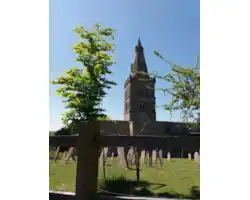Inspired by the brand new #StoryOfOurStreet project from Family Tree and History Scotland, Helen Tovey gives a taster of the history that is found dotted along her small village road
We’ve lived on Stocks Hill for the past 12 years, and been in the village for longer. On the one hand, it’s just a lovely, but ordinary, village. But – once you start looking – you don’t even have to scratch the surface to start spotting history all around you.
The street name
Its name for a start. Yes it’s called Stocks Hill as the village stocks used to be located at the bottom of the hill, near the Royal Oak pub, and were still in use in the 1830s. The ‘Hill’ part of the name may make someone from hillier territory laugh. It is more of a sloped road, but bearing in mind the village is Castor, near Peterborough, with the Fens starting just a few miles east of that, then you get the idea that the landscape isn’t mountainous.
Notable buildings on the street
Walking up the hill, there’s the village school on the left-hand side – the new school hall giving an impression that it’s not been there long, but the other school buildings on the site date back much further. The earlier Castor Infants School was founded on the site in 1861 on part of what had been the graveyard of the parish church – St Kyneburgha’s Church (named after a Mercian princess and abbottess, daughter of King Penda). On the opposite side of the road from the church is still the Glebe Field, usually grazed by sheep, and in winter when it snows is packed with tobogganing children.
Take a few paces further, and you come across stonework that juts out raggedly from the otherwise orderly wall of the Victorian Rectory. A handy sign explains that this stonework is part of the remnants of a massive Roman Praetorium (military base). When 'Time Team' came to dig the area (see season 18, episode 6 on YouTube) they estimated that – at roughly 100 metres wide - the Praetorium would have dwarfed the impressive medieval church that stands on the site today.
The houses
But what of the houses down the street? Number 1 Stocks Hill has a date stone on the gable, saying 1803, and walking along the road takes just a few minutes – there are only about 30 houses (no number 13!), the majority built in the 20th century. There were some cottages, near number 1, but they burnt down roughly a century ago. I once found an illustration of the houses from that era, just before the fire, complete with Ag Labs wearing smocks but like an idiot I didn’t save it.
Our house
Our home is second from last on the road, a semi built a little over 50 years ago, down a little track. Our wonderful neighbour is the original inhabitant of her side of the semi, and it was built for them at the time that she married, by a local farmer, who her husband worked for. Our house has still got the original Crittal windows (yes we do get ice on the inside every winter) and the same sturdy iron bath and taps.
At the end of the road, just a few metres beyond us the track becomes called ‘Cow Lane’ – and it used to be a cattle drove, that led to fields north of the village. In the past few decades a dual carriageway (to bypass the traffic from the village) cut through the footpaths, but in the recent lockdown – with less traffic about – people have been able to cross the carriageway and enjoy the footpaths that the people of the past would have trod so frequently in years gone by.
How to trace the history of your street
Here are three of the steps Helen used to gain clues about the history of the road she lives on:
1. Take a walking tour of your street
Note down points of historical interest that you can research later.
Keep an eye out for date stones and property names on buildings, for hints as to build dates and former property uses.
2. Study historic maps
The collections at Oldmapsonline.org are freely available to use, and the map images will make attractive additions to your street history.
From maps, Helen learnt the location of the village stocks and the name of Cow Lane (which isn’t marked by a signpost today).
3. Track down a village history
With pictures and research, a detailed local history will help you peel back the years and uncover the history that might be hidden by more modern developments.
From the local village history ‘Five Parishes, their People and Places’, Helen learned about the history of the primary school on her road.
Check Archive.org – this has many local histories freely available, you may find one covering your area.
To join in with the StoryOfOurStreet challenge - simply search for #StoryOfOurStreet on social media, and be sure to sign up to the free enewsletter to get your free #StoryOfOurStreet check list.







